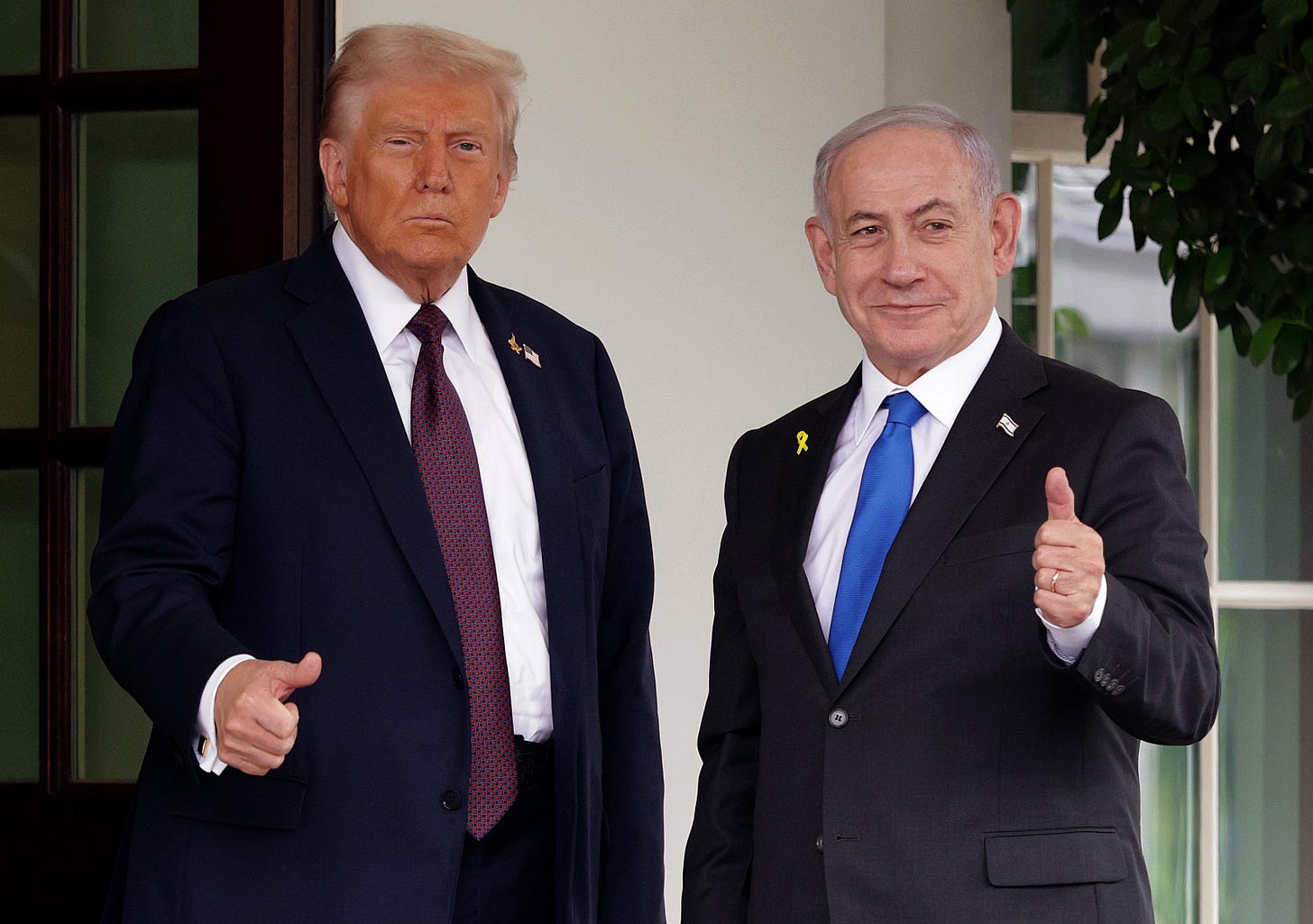Trump-Netanyahu Peace Plan: A Fragile Accord Amid Deep-Rooted Tensions
On September 29, 2025, President Donald Trump and Israeli Prime Minister Benjamin Netanyahu unveiled a 20-point peace plan aimed at resolving the Gaza conflict, a high-stakes proposal that carries both promise and an ultimatum.
Announced in a White House press conference, the agreement demands Hamas accept its terms or face “annihilation,” as Trump put it, with Netanyahu echoing the need to “finish the job” if rejected.
With the two-year anniversary of Hamas’s October 7, 2023, attack—killing 1,200 Israelis and taking 251 hostages—looming, the plan seeks to halt a war that has claimed over 65,000 Palestinian lives, according to Gaza’s health ministry.
But beneath the diplomatic fanfare lies a complex web of Israeli influence in U.S. politics, a history of ceasefire violations, and questions about whether this deal can halt Israel’s broader ambitions in Gaza and the West Bank.
The Peace Plan: Terms and Stakes
The Trump-Netanyahu accord is a phased roadmap, blending humanitarian concessions with stringent security demands. Its core elements include:
-Hostage-Prisoner Swap: Immediate release of all 48 remaining Israeli hostages (20 believed alive) for hundreds of Palestinian prisoners, building on a November 2023 exchange.
-Phased Israeli Withdrawal: Israel would gradually exit Gaza, contingent on Hamas’s compliance, with timelines tied to security benchmarks.
-Demilitarization: Hamas must disarm entirely, with options for its members to accept exile or face elimination. Gaza would remain under Israeli security oversight.
-Humanitarian Surge: Full restoration of water, electricity, and medical aid, plus equipment to clear rubble, echoing a January 2025 aid pact.
-Board of Peace: A Trump-chaired international panel, including Arab states, to oversee Gaza’s reconstruction and ensure compliance.
Trump called it a “historic chance” for peace, while Netanyahu framed it as meeting Israel’s war aims: hostage recovery, Hamas’s neutralization, and a demilitarized Gaza.
Arab mediators, via Qatar and Egypt, are reviewing the plan, but Hamas has signaled resistance, particularly to disarmament and exile clauses.
The ultimatum is clear: accept, or Israel, with U.S. backing, will escalate military operations, potentially targeting Hamas’s remaining leadership, as seen in the July 2024 killing of Ismail Haniyeh.
Israel’s Influence in America
The agreement’s unveiling highlights Israel’s outsized influence over U.S. policy, rooted in decades of lobbying and strategic pressure. The American Israel Public Affairs Committee (AIPAC) has spent over $30 million in recent election cycles to back pro-Israel candidates and unseat critics like Reps. Jamaal Bowman and Cori Bush, who called for Gaza ceasefires.
A 2024 New York Times report exposed a $2 million Israeli government campaign using fake social media accounts to sway U.S. lawmakers, targeting Black Democrats with pro-Israel propaganda.
Allegations of coercion run deeper: declassified U.S. files from the 1980s reveal Israeli intelligence bugging and bribing American officials, while unverified claims tie Mossad to Epstein’s network for potential blackmail.
Netanyahu’s own words fuel these perceptions. In a September 2024 podcast, Tucker Carlson claimed the prime minister boasted to world leaders, “I control the United States. I control Donald Trump.”
Netanyahu denied this, slamming Carlson as an apologist for “America’s enemies.” Yet Israel’s $150 billion in U.S. aid since 1948 and bipartisan congressional support—evident in standing ovations for Netanyahu’s 2024 address—underscore a unique grip on American politics.
Ceasefire Violations and Trust Deficits
The plan’s viability is shadowed by Israel’s history of ceasefire breaches. A January 2025 truce saw nearly 1,000 violations in its first phase, per Palestinian reports: 116 civilians killed, 490 wounded, and aid blockades despite agreements.
Israel’s refusal to withdraw from Gaza’s Philadelphi corridor and bombings of UN facilities, killing staff, shattered trust.
The UN condemned Israel’s aid restrictions as “weaponizing starvation,” violating international law.
These actions suggest reluctance for a permanent ceasefire, aligning with Israeli officials’ statements about long-term control over Gaza.
The Greater Israel Vision
The peace plan’s focus on Gaza cannot obscure Israel’s broader ambitions. A September 2025 UN report accused Israel of seeking “permanent control” over Gaza and the West Bank, with actions like 3,400 new settlement units and E1 projects splitting Palestinian territories.
Finance Minister Bezalel Smotrich called it a step toward erasing Palestinian statehood. The International Court of Justice’s July 2024 ruling declared the occupation illegal, yet Israel’s operations, including 60,000 reservists mobilized in Gaza, signal a push for the Greater Israel vision—biblical borders encompassing Palestinian lands.
Trump’s recent stance adds intrigue. On September 25, 2025, he told reporters, “I will not allow Israel to annex the West Bank... It’s not going to happen,” citing risks to the Abraham Accords. Is this a genuine check on Netanyahu’s coalition, which seeks up to 82% of the West Bank, or diplomatic posturing?
With 700,000 settlers already reshaping the West Bank’s demographics, annexation may already be de facto reality.
A Moral Crossroads
The Trump-Netanyahu plan offers a glimmer of hope—hostages freed, aid restored, reconstruction begun—but its success hinges on trust neither side has shown. Hamas’s rejection risks escalation; Israel’s violations erode credibility. As Gaza’s 2 million displaced face famine and the West Bank’s communities endure settler violence, silence is complicity.
Those who condemned past atrocities must now act—through advocacy, sanctions, or protest—or risk history’s judgment for standing idle as a humanitarian catastrophe unfolds.


